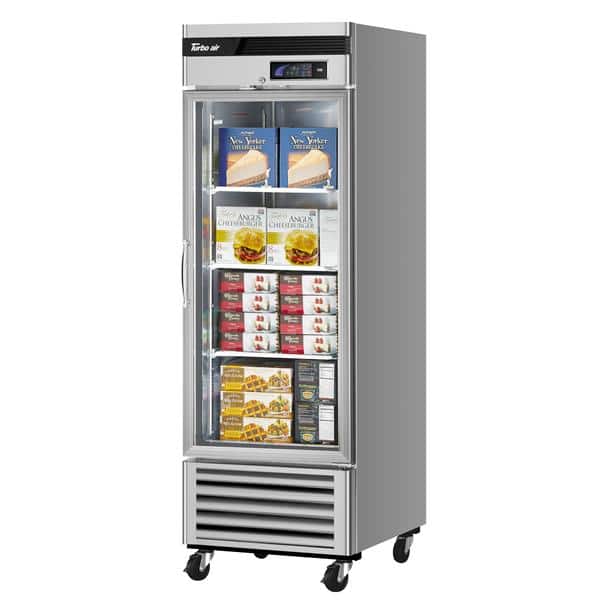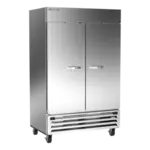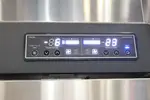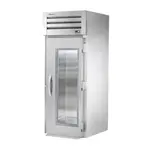Frost-Free Freezers: What They Are and How They Work
What is Freezer-Frost?
If you own an old freezer, you are familiar with freezer frost. Defrosting some units requires hard work and planning to scrape out the frost build-up, which makes the frost-free option appealing. Before you make a choice, arm yourself with the right information.
Frost on the insides of the freezer comes from moisture in the air. Once the moisture achieves a low enough temperature, it sticks on the coldest surface nearby. Most times, this is usually the sides of your freezer. The moisture seeps into your unit any time you open the door. Plus, broken gaskets leak to allow water to get in.
Other causes of freezer frost include:
- Unwrapped or poorly packaged items that release moisture that gradually works its way to the coldest part of a freezer
- Placing hot or warm food in a freezer also causes humidity, resulting in frost development on the interior walls
- Putting wet food in the unit also contributes to the issue
- Too much or too few food items
Why Defrosting Your Freezer Matters
Unless you have a frost-free model, frost buildup is natural in freezers. While there is no way of preventing moisture from building up, there are steps you can take to reduce the occurrence of freezer frost.
You might wonder, however—what is so wrong with a bit of frost? Isn’t it water, after all?
Freezing food items is the core aim of the refrigeration unit that ensures your items last longer. The freezing temperatures in the freezer stop microbes responsible for food decay from thriving. As long as you can avoid freezer burn and maintain low enough temperatures, frozen food can stay good for a long time. But freezers don’t always stay at a freezing point at all times.
Every time you open the door, the temperature changes a bit, and other conditions can lead to frost buildup. This can cause buildup that’s sped up by the clash of cold and warm air, and you eventually lose valuable space because of walls of ice. Plus, your freezer becomes less efficient.
Manual defrosting or through a frost-free model ensures your food lasts. You want your unit to help you save money and time by storing food at optimal temperatures, so you need to make sure it runs well. One solution is purchasing a frost-free freezer.
What Does Frost-Free Mean and How Does it Work?
Frost-free roll-thru, pass-thru, or reach-in freezers have built-in technology that prevents ice buildup by defrosting itself automatically after a set period. Old model freezers require manual defrosting regularly, which takes plenty of precious time. Modern advances in frost-free technology eliminate this problem. So, how does a frost-free freezer work?
A frost-free freezer has four basic components:
- Timer
- Heating coil
- Temperature sensor
- Water collection pan
Every few hours, the timer activates the heating coil. Heating coils in these units are wrapped with the freezer coils. The heater helps melt the ice off the coils. Once all the ice is gone, the temperature sensor detects when temperatures are higher than 32 degrees Fahrenheit (or 0 degrees Celsius) and turns off the heating coil. A mechanism drains the resulting water into the small pan where it’s evaporated into the outside air. The entire process works without you lifting a finger!
Pros and Cons of Frost-Free Freezers
The frost-free design of refrigerators, freezers, and drop-in frost drops allows them to work efficiently without regular manual defrosting. While they are convenient appliances for the hospitality business, consider the pros and cons before purchasing a frost-free freezer.
Frost-Free Freezer Pros
- No more frosting problems – You do not have to deal with annoying ice crystal formations on food and in the freezer. This means that your food packages don’t stick together and labels will not become unreadable.
- Less maintenance – An obvious benefit is that you don’t have to deal with the defrosting task yourself. Manual freezer defrosting usually means unplugging the unit and waiting for the ice to melt away. This can be a drawn-out challenge that may require the use of hot water to speed things up and scraping away at difficult ice packs. The frost-free unit is virtually maintenance-free; all you need to do is regularly wipe down the internal surfaces to remove spills and odors.
- More storage space – You don’t lose storage space to frost buildup. However, you shouldn’t pack the freezer to the brim. Your unit uses a fan for blowing cold air over stored food and keeping moisture away. When you fill it with too much, air does not circulate properly. Make sure you follow the manufacturer’s instructions when packing your items in a frost-free freezer.
Frost-Free Freezer Cons
- Higher purchase price – The cost of acquiring a frost-free freezer may make you reconsider the decision. This is because, in part, the high cost of materials and extra heating coils in the unit. A frost-free option is considered a premium or optional feature, so such models can come at a higher price tag compared to traditional freezers.
- They are more expensive to maintain – A frost-free freezer uses double the energy of a manual unit. The heating coil that raises the temperature, the fan for circulating cold air, and the sensor all consume power.
Take The Next Step
Overall, it is always beneficial to purchase a frost-free freezer even if the costs are higher than the traditional freezers. These units are easy to maintain and provide a longer user experience in a business setting.
















